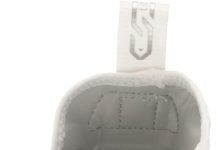Lacing up our cleats and stepping onto the field is exhilarating, but what happens when those trusty studs start to wear out? Fear not, fellow athletes, for we have the solution!
In this article, we will guide you through the process of changing out the studs on your detachable cleats, ensuring that you can continue to dominate the game with the utmost confidence.
So, grab your tools and get ready to become a pro at maintaining your cleats in no time!
Preparation
Review contents
Gather Necessary Tools
Before starting the process of changing out the studs on your detachable cleats, it’s essential to gather all the necessary tools. You will need a stud key or wrench, a brush, a bucket, clean water, soap or mild detergent, a thread locker, and a pair of pliers (optional for extra grip). By having all these tools ready, you can ensure a smooth and efficient process.
Choose the Right Replacement Studs
When choosing suitable replacement studs for your cleats, you must consider factors such as the type of sport you’re involved in, playing surface conditions, and your preferences. Studs come in different lengths and shapes, including cone, blade, and round studs, offering specific advantages and traction. Consulting with a professional or doing research can help you make an informed decision and select the studs that best suit your needs.
Removal of Old Studs
Inspect the Cleats
Before removing the old studs, inspecting the cleats thoroughly is essential. Look for any signs of damage or wear on the cleats and ensure they are still in good condition. Additionally, check the threading of the studs to ensure it’s not stripped or damaged. If you notice any issues, it’s best to address them before proceeding with the stud replacement.
Loosen the Studs
With the help of a stud key or wrench, begin by loosening the old studs. Insert the key into the stud and turn it counterclockwise to loosen. It’s important to remember not to use excessive force while doing this, as it can cause damage to the cleats or studs. If you encounter stubborn studs that are difficult to loosen, a pair of pliers can be used for additional grip while turning.
Remove the Studs
Once the studs have been loosened, they can be easily removed by twisting them counterclockwise. Continue this process for each student until they have all been successfully removed. Take care not to misplace the studs as you remove them so you can easily track them for future use or disposal.
Cleaning the Cleats
Brush off Dirt and Debris
Before cleaning the cleats, brushing off any dirt and debris that may have accumulated on the surface is essential. Use a brush designed for cleats or any stiff bristle brush to remove the loose dirt gently. Pay extra attention to the areas around the stud holes to ensure they are clear and ready for the next steps.
Soak Cleats in Soapy Water
After brushing off the dirt, it’s time to clean the cleats thoroughly. Fill a bucket with clean water and add a small amount of soap or mild detergent. Submerge the cleats in the soapy water, ensuring they are fully covered. Allow them to soak for a few minutes to loosen any remaining dirt or grime.
Scrub the Cleats
Once the cleats have soaked, take the brush and scrub them gently to remove any remaining dirt. Please pay close attention to the stud holes and the areas around them, as this is where most of the debris tends to accumulate. Rinse the cleats thoroughly with clean water to remove any soap residue.
Inserting New Studs
Apply Thread Locker
Before inserting the new studs, it’s recommended to apply a thread locker to ensure a secure fit. A thread locker is an adhesive that helps prevent the studs from coming loose during use. Apply a small amount of thread locker to the threading of each stud to provide added stability and reduce the risk of them unscrewing during play.
Align the Studs
When inserting the new studs, align them properly with the stud holes on the cleats. Carefully twist the studs clockwise, starting by hand and then using the stud key or wrench for additional tightening. Ensure they are securely fastened, but be cautious not to over-tighten, as it can damage the cleats or studs.
Tighten the Studs
Once the studs are aligned and in place, use the stud key or wrench to tighten them securely. Remember to use moderate force and be cautious not to overtighten, as it can cause damage. Double-check each stud to ensure it is tightened uniformly and securely before moving on to the next one.
Testing and Finishing
Check Stability
After inserting and tightening the new studs, it’s essential to test the stability of the cleats. Walk around in them and try to replicate the movements you would make during sports activities. Pay attention to any wobbling or instability, which could indicate that the studs are not securely fastened if any issues are detected, re-tighten the studs as necessary.
Trim Excess Studs
If the new studs are longer than the previous ones, it might be necessary to trim any excess length. Using a stud key or a pair of pliers, carefully cut off the excess part of the stud, ensuring that it is still long enough to provide adequate traction. Removing the excess length will prevent it from protruding too far out and potentially causing discomfort or injury.
Clean and Store Tools
Cleaning and storing your tools properly is essential once you have completed the stud replacement process. Rinse any dirt or debris from the brush and stud key or wrench. Allow them to dry thoroughly before storing them in a safe place. Keeping your tools clean and well-maintained will ensure they are ready for future use and help prolong their lifespan.
Tips and Tricks
Consider Different Stud Lengths
When choosing replacement studs, consider experimenting with different lengths to find the ones that provide optimal traction for your playing surface and style. Shorter studs are better suited for hard surfaces, while longer ones are more suitable for softer ground. By having a variety of stud lengths on hand, you can easily adjust them based on the conditions of your playing field.
Replace All Studs
While it may be tempting only to replace the worn or damaged studs, replacing all of them is generally recommended. By doing so, you ensure consistent traction and stability throughout the cleats. Replacing all the studs also helps prevent potential issues with uneven wear and reduces the chances of stud failure during play.
Regular Maintenance
To maximize the life and performance of your cleats, it’s essential to maintain them regularly. Clean your cleats after each use to remove dirt and debris, as they can affect the performance of the studs. Inspect your cleats and studs periodically for any signs of wear or damage, and replace them as necessary. Regular maintenance will help keep your cleats in top condition and ensure optimal performance on the field.
Changing out the studs on detachable cleats is a relatively simple process that can significantly enhance the grip and performance of your footwear. By following these steps and keeping a few tips in mind, you will be well on your way to having cleats that provide excellent traction and stability on any playing surface.
So gather your tools, choose the correct replacement studs, and give your cleats the upgrade they deserve! Happy playing!





































